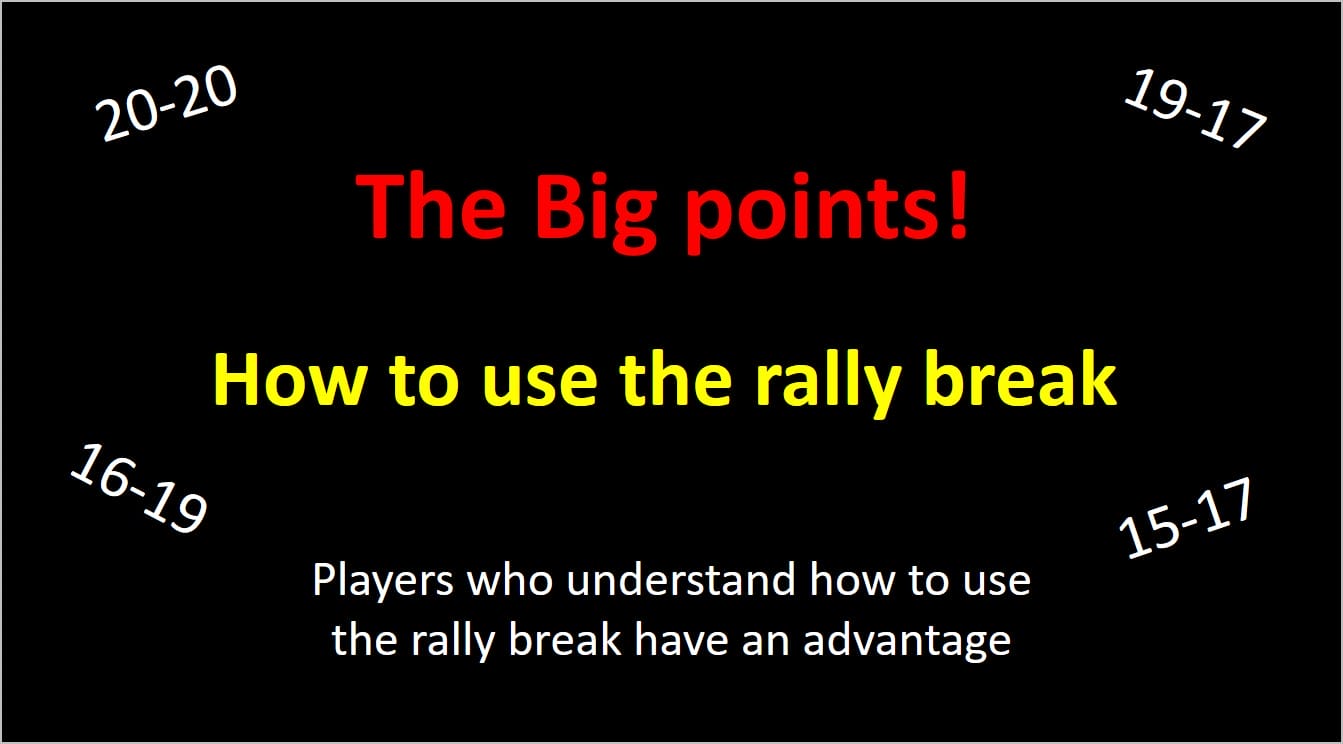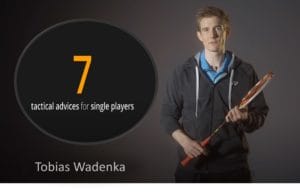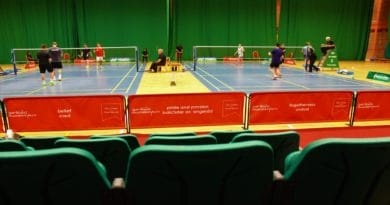Coach Question : How do you develop tactically astute badminton players?
I asked a friend for a tough question, this is what they sent 🙂
“What are your recommendations to help coaches develop tactically adaptable and astute players?”
When would you start to introduce tactical concepts to your young players?
– – – – – – – – – – – – – – – – –
I needed some help – what was the dictionary meaning of astute?
‘having or showing an ability to accurately assess situations and turn this to one’s advantage’
– – – – – – – – – – – – – – – – –
I messaged back and asked for more, they sent this reply …
“When should I be introducing tactics”
and crucially
“How should I be doing this (coaching tactics)”
– – – – – – – – – – – – – – – – –
The question was certainly intriguing and tough
- What did I know about introducing tactics to players, especially novice players ?
- Has anyone published information concerning the fundamentals of badminton tactics ?
- What tactical concepts are best to start introducing to players ?
– – – – – – – – – – – – – – – – – –
I’ve split the questions into smaller chunks to help arrange my thoughts
1 – Where do tactical thoughts happen ?
2 – When and how to introduce tactical thoughts ?
3 – What tactical concepts are best to start introducing to players ?
4 – Has anyone published information concerning the fundamentals of badminton tactics ?
– – – – – – – – – – – – – – – – –
There is a danger that the majority of your coaching may be focused on improving technique in the belief that this will develop into tactical play
– – – – – – – – – – – – – – – –
1. Where do tactical thoughts happen
To help this discussion I would like to broaden the definition of tactical thoughts so that it includes more than just what happens in rallies. Badminton tactics can be complex, however, our task must be to simply them where we can.
You may think that some of what follows is pushing the discussion to extremes, but hey it’s my post and I can only hope that it stimulates thoughts
Would you be happy with these different categories of tactical thoughts?
Tactical thoughts exist …..
- In between rallies when there is some time (say 10 – 15 seconds)
- During the rally itself as a series of very quick rapid decisions and choices
- As an overview of the whole match, more than just rallies, it’s how you make judgments when trying to implement or adapt your tactics throughout the match – we could call this ‘Tactical courtcraft’.
- Away from the court or the hall when alone and preparing for the event. The planned and random thoughts that come in and out of your head.
- In your practice, create situations that enable you to experiment or refine certain tactics ready for competition. Or, practices where you are required to work out how to master the tactics that your opponents are using to hurt you.
Do you design practices and strategies to develop tactical thinking in all 5 of these situations?
– – – – – – – – – – – – – – – –
2. When and how to introduce tactical thoughts ?
I suggest that the art, the skill of thinking tactical happens as soon you first interact with our sport
How and when do you work with players to improve their tactical thinking?
Not just on court tactics but how to put themselves in an emotional state to make decisions
Ideas to try
Here are some suggestions for you to try in your sessions. You will have to expand on them and develop further ideas. If you find that you like some of the suggestions then please let me know. Alternatively, if you disagree then please tell me why. I’m always happy to hear your thoughts and to support any post you want to write if it helps others when they coach badminton tactics
Simple on-court suggestions
- Encourage young players to “Try and hit the shuttle AWAY from me, please don’t always think you have to hit it back to me in practice (coach or parent)“
- Allow players to have choices in practices (as they would make in a competition), ensure that they include movement of both players – reduce the number of static feeding practices
- If you are a better player and use practice matches with your players, then use the tactics that are applicable to the standard of the person you are coaching – sounds simple but do you do this?
- Set up mini-games where you give players glimpses of your ‘weak’ areas (ie deep b/h) in the hope that they will see it and work to capitalise upon it – this is similar to the one above
- Praise and reward players when they verbalise the things they see opponents doing (this includes you the coach). Create situations that are full of aspects for them to exploit. Ask them how they intend to take advantage of their observations – this may take many forms
Ask Questions
- Create on-court situations (as part of a game) and ask novice players about their experiences – discuss what happened, what could have happened, their ideas and thoughts. Let the conversations develop slowly.
- Ask players how they would exploit an opponent’s weakness – you decide the stroke or part of the court or the frailty. Practice as if it was a fun quiz 🙂
- Create group discussions based around how they would ‘hide’ their own weaknesses – what strategies could they think of to achieve that
- Then there are the quick-fire in-game strategies such as – “what if your opponent started to do this …..”, “what could you now when the opponent is in this position .. “, “how can we use the time between rallies”
– – – – – – – – – – – – – – – –
3. What tactical concepts are best to start introducing to players?
I’m sure you have your own views on the core badminton tactics that players could use. Would you like to share them?
I’d be very happy to publish a guest post for you.
The way you introduce the tactics to players is equally as interesting as the tactic itself. Have you given equal thought to the different ways that you could incorporate them into your practice? It isn’t just “do this when the shuttle is here”
Do you use different methods that don’t just rely on direct instruction from you?
3 categories that you may want to consider when working with beginner players
-
In-game strategies (A – B – C of singles tactics)
-
Rally break thoughts
-
Whats if’s and what would you do
In-game strategies
These are the tactical ideas that your players can use while they are playing the game, during the rallies. The concept is simple, its as simple as A, B, C 🙂
The original ideas aren’t mine. I first became aware of it when working with my mentor Roger Mills. Roger proposed that for singles (and he suggested that singles was the best game to start with) the size and shape of the court was ideal for simple tactical concepts. These are initially aimed at beginners, however, there are many variations to explore within each, some of which will apply even at an elite level.
The first 3 concepts are below.
I will write more about the A – G of Single Tactics in another post. However, in summary, they are tactical concepts that can be introduced in the forms of games within a practice. Certainly not routines! They allow for and actively encourage players (even novice players) to explore what they could do to use that specific tactical theme.
Please look out for the detailed post, or sign up now for the mail that gives you advanced notification of everything that I publish. Click here to sign up.
A – Away from the opponent: that is striking the shuttle Away from xxxx, there are 3 types of ‘Away’, can you guess what they are?
B – Backhands are weaker: how can you exploit them? how can you hide them?
C – Concentrate errors: creating them in your opponent’s play, reducing them in your own play. How can this be achieved?
Your coaching task is to create practices, challenges, and questions that are aimed at incorporating the A, B, C above in a fun gamelike practice/match
Rally break thoughts
The concept is to use the time between rallies to your advantage. Players who understand how to use the rally break have an advantage
 This time is far more than just collecting the shuttle or passing it back to your opponent. In fact, I recommend that you don’t pass it back under the net.
This time is far more than just collecting the shuttle or passing it back to your opponent. In fact, I recommend that you don’t pass it back under the net.
It’s an opportunity that should be used. If you have never practiced what to do and think during this time, start now.
It doesn’t matter if you have won or lost the previous rally. This is an opportunity to start the next rally with a positive thought and intent. However, what could you be doing and thinking? Are there proven things that other players are doing to trigger the emotions they need? If you want to know more click here on this image.
I recommend that you include ideas and suggestions in your practices, even with beginners.
Once your players know what they could do, the effect on a match will be immediate. The tips in the post will concentrate on the time between points, the rally break, give you and your players’ ideas, and direct advice on how to practice using the rally break.
Do you talk to your players about the things they could be doing and thinking about during the rally breaks?
Whats if’s and what would you do
Why not try this idea, its an alternative to teaching tactics by the coach directing or telling players what they could/should do.
Once your novice players have an understanding of some strokes and movements, set them these questions and challenges. Some of the concepts and strategies will help novice players but can also be used to develop elite players.
Coaches need to design practices that encourage players to think about and then find practical ways of resolving or answering these challenges on court. Some of your ideas may come in the form of Conditioned Games, but there are other coaching methodologies to try.
How would you resolve these ‘what if’s’
- The shuttles are very fast, what can you do to still be effective and win the game ?
- You have a weak backhand, how can you hide it and make it difficult for your opponent to exploit ?
- Do you think it’s possible to apply stress to your opponents when they are serving or when you are serving, how can you do that ?
- What could you be doing or thinking about in between the rallies, is it possible to talk to yourself at these times ?
- The court is longer than it is wider, does this affect the way you may play ?
– – – – – – – – – – – – –
4. Has anyone published information concerning the fundamentals of badminton tactics?
Books
A quick search on Amazon and I found these books. Have you read any and did they help you?
Most focus on strategies for singles and give general advice. I’m still searching for specific guidelines and processes that coaches could use when introducing and developing tactics and especially tactical thoughts in younger players.
The book below certainly gives some fantastic insights running through the thoughts of players and coaches prior to and during competition.
The information describes real events and issues faced by some of the world’s best players. I recommend that you place it on your wish to buy and read.
Videos
– – – – – – – – – – – – – – – – – – – – – – – – – – –
Do have thoughts regarding the early introduction of tactics and tactical ideas/concepts.
Would you be willing to write them down and share them?







